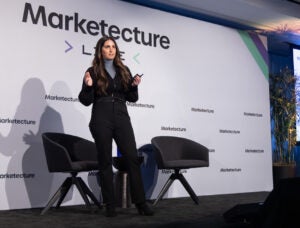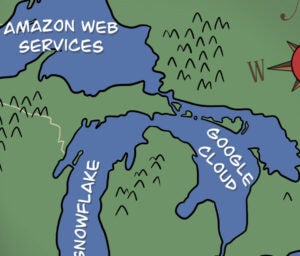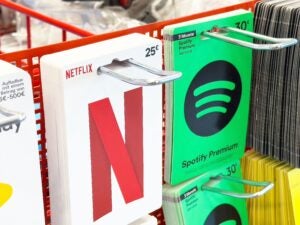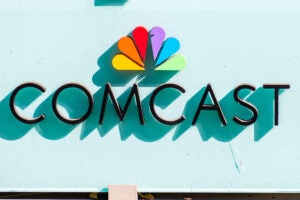 The cable model may be going online, if last week’s reports around a possible Snapchat licensing model are true. (Snapchat declined to comment.)
The cable model may be going online, if last week’s reports around a possible Snapchat licensing model are true. (Snapchat declined to comment.)
Publishers would receive a licensing fee for their content on Snapchat Discover, instead of selling ads themselves and taking a share of revenue.
By moving to this model, Snapchat would consolidate all its ad sales and better position itself against Google and Facebook.
Having one Snapchat sales team would avoid channel conflict that arises when two sales forces sell nearly the same thing. Publishers sell the ads that appear on their Discover channels exclusively, while Snapchat handles the rest, which can include ads within those channels, a potential source of friction.
But Snapchat has its own growing sales team led by former Viacom exec Jeff Lucas, and which is larger than those of its Discover publishers. If Snapchat were to sell the inventory across the Discover channels itself, it would gain more control over its revenue and avoid the friction of two sales forces.
“The ad share model has never been a very reliable one,” said Martin Nisenholtz, a consultant and Columbia University professor who started The New York Times’ digital operation. “The licensing model assures Snapchat of a continuing stream of presumably high-quality content, where they not only get to determine what content they get, but how advertising works in that experience.”
Meanwhile, a licensing fee from Snapchat would let publishers focus on content creation. Better content would help Snapchat attract older audiences in order to grow, especially as it heads toward a possible IPO.
“[Snapchat] needs to gain traction and publicize itself beyond its core demographic. It also needs the massive amounts of content from the major networks to make [becoming a next-gen cable network] happen,” said Scott Linzer, VP of owned media at iCrossing.
This model could be lucrative to publishers as well, assuming Snapchat pays handsomely – which it might initially do.
While moving to a licensing model might slightly hurt Snapchat’s short-term revenue over the next four or five years, it could improve its long-term outlook, assuming that it works the way cable affiliates do. Those deals usually have annual payout increases built into the contract, which favor the platform as long as it grows faster than licensing fee increases.
The idea of digital advertising moving to a licensing fee can feel revolutionary, but Nisenholtz recalled how in the early days of the internet, AOL paid millions for content from publishers like The New York Times, which only paying AOL subscribers accessed. That stopped once those publishers started setting up their own websites.
For that reason, Nisenholtz expects a licensing deal would focus on content exclusivity. “It’s unlikely to me that Snapchat would pay for content that they could get for free elsewhere. We’ve already been through that with AOL, and it didn’t work,” he said.
Other platforms are starting to pay for access to content, too.
Facebook paid publishers to produce Facebook Live videos. And Twitter paid the NFL to stream live games. Meanwhile, it’s worth noting that paid subscription portals are taking off, especially ones that focus on video – Hulu, Netflix, HBO Go and YouTube Red. All rely on licensed content to some extent, even YouTube.
Content is a key strategic piece of Snapchat’s future success, said Stevie Dove, social studio director at SapientNitro. The app needs to focus on “scale, content and measurement” in order to succeed and become a cable network-like platform.
“They are doing a killer job so far, but everyone knows they have a long and tough road ahead to survive,” Dove added. “Just look at Twitter.”
Ryan Joe contributed.














